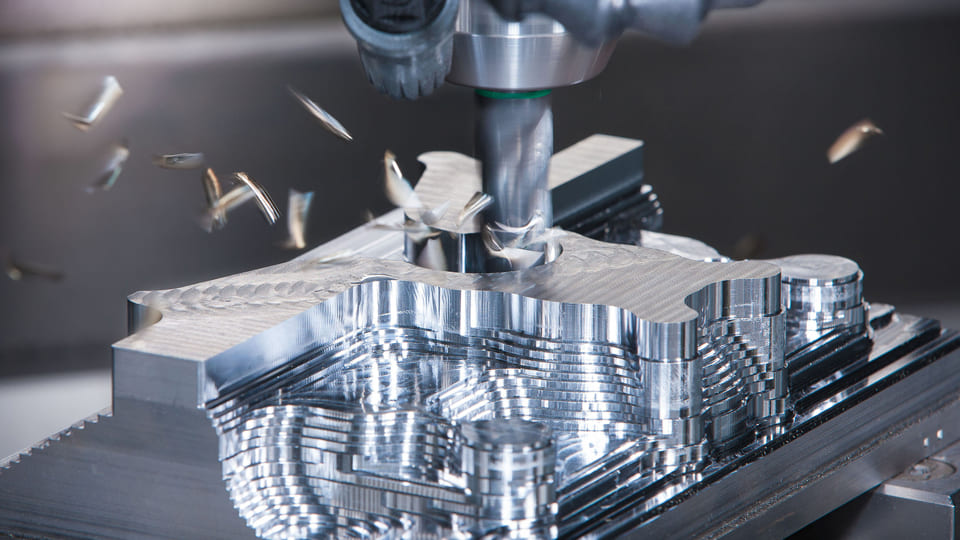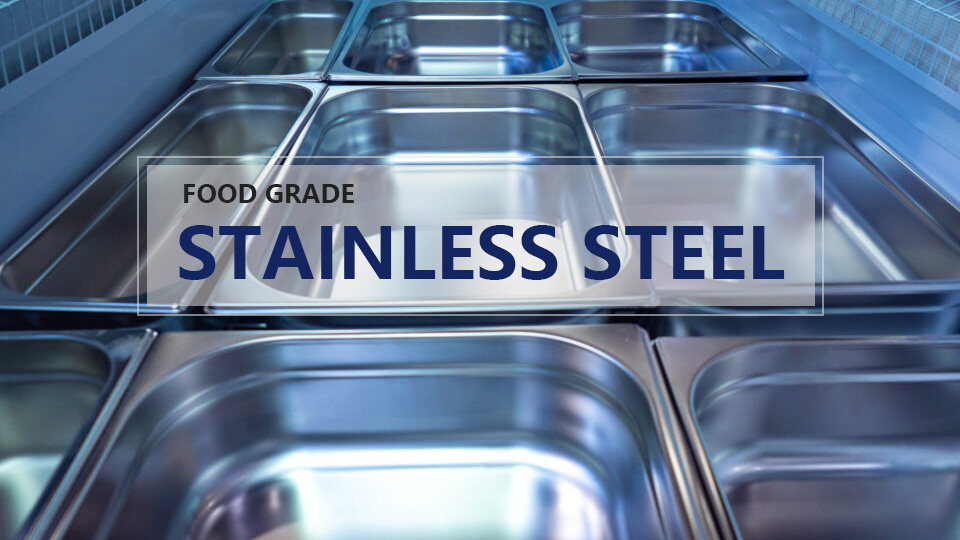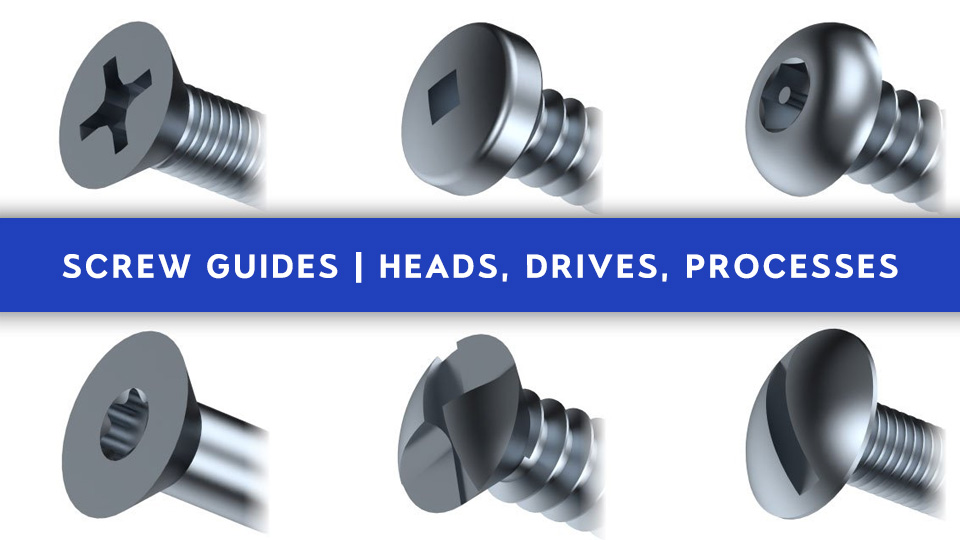Stainless steel is the most commonly used metal material in our daily life. It is widely used in tableware and cookware, construction, and medical equipment. 18-8 and 316 are the most common stainless steel alloys. Have you ever thought about the difference between 18-8 and 316? In this article, we will compare 18-8 and 316 stainless steel from the perspectives of element composition, physical properties, and cost analysis.
What is 18-8 Stainless Steel?
18-8 is a specific grade of stainless steel that indicates its composition of materials. The number 18 and 8 represent the percentages of two key elements in this stainless steel alloy:
18% Chromium(Cr): Chromium is a key element in stainless steel. It enhances the corrosion resistance of stainless steel.
8% Nickel(Ni): Nickel is another important ingredient that helps to enhance the corrosion resistance of stainless steel and also helps maintain its ductility and toughness.
18-8 stainless steel refers to a stainless steel alloy composed of more than 18% chromium and more than 8% nickel. It has another familiar name-304 series. The alloys belonging to 18-8 stainless steel includes 304, 304L, 304N,304LN.
Let us see the key composition of the 18-8 grade stainless steel:
| Element | C | Mn | Si | P | S | Cr | Ni |
| Ratio(%) | 0-0.08 | 0-2.0 | 0-1.0 | 0-0.045 | 0-0.30 | 18.0 | 8.0 |
And more technically, this table shows the properties of stainless steel 18-8.
| Properties | Value |
| Density | 7.93 g/c㎡ |
| Tensile Strength | 515 MPa |
| Yield Strength | 205 MPa |
| Hardness(Brinell) | 201–262 HB |
| Melting Point | 1,400–1,450 °C |
| Thermal Conductivity | 16.2 W/m·K at 100 °C |
| Electrical Resistivity | 720 nΩ·m at 20 °C |
| Corrosion Resistance | Good |
18-8 stainless steel is endowed with many advantages such as excellent rust and corrosion resistance, high strength, machinability, and weldability.
What is 316 Stainless Steel?
316 stainless steel is another alloy that is more commonly used than 304. A crucial difference between them lies in their composition, 316 contains Mo while 304 does not. Generally speaking, 316 has better corrosion resistance than 304 in high-temperature environments.
Let us see the key composition of the 316-grade stainless steel:
| Element | C | Mn | Si | P | Mo | S | Cr | Ni |
| Ratio(%) | 0-0.08 | 0-2.0 | 0-0.75 | 0-0.045 | 2-3% | 0-0.30 | 16.0-18.0 | 10.0-14.0 |
Since stainless steel 316 contains 18% Cr and 10% Ni, sometimes we call it stainless steel 18-10.
The table below shows the main properties of stainless steel:
| Properties | Value |
| Density | 8.03 g/c㎡ |
| Tensile Strength | 515 MPa |
| Yield Strength | 205 MPa |
| Hardness(Brinell) | 217 HB |
| Melting Point | 1,648–1,673 °C |
| Thermal Conductivity | 16.3 W/m·K at 100 °C |
| Electrical Resistivity | 740 nΩ·m at 20 °C |
| Corrosion Resistance | Excellent |
Differences Between Stainless Steel 18-8 vs. 316
If we combine the previous 18-8 and 316 property tables into one table, we can draw a conclusion: the difference in physical and mechanical properties between them is very small.
| Properties | 18-8 | 316 |
| Density | 7.96 g/c㎡ | 8.03 g/c㎡ |
| Tensile Strength | 515 MPa | 515 MPa |
| Yield Strength | 205 MPa | 205 MPa |
| Hardness(Brinell) | 200 HB | 217 HB |
| Melting Point | 1,400–1,450 °C | 1,648–1,673 °C |
| Thermal Conductivity | 16.2 W/m·K at 100 °C | 16.3 W/m·K at 100 °C |
| Electrical Resistivity | 720 nΩ·m at 20 °C | 740 nΩ·m at 20 °C |
18-8 vs. 316 Stainless Steel: Composite
18-8 refers to its composition of 18% chromium and 8% nickel. Besides, it composite of other elements such as Si, P, and Mn. Stainless steel is composed of 16% 18% chromium, 10-14% nickel, 2%-3% Mo, and small amounts of other elements such as Mn, Si, and P.
In addition to the different contents of Cr and Ni, the core difference between them in elemental composition is that 316 contains Mo while 18-8 does not. The Mo element has better corrosion resistance in marine environments, high temperatures, and media containing chloride ions.
18-8 vs. 316 Stainless steel: Corrosion Resistance
Corrosion resistance is one of the most important properties of stainless steel, including 18/8 and 316 grades. The chromium contained in these alloys plays a vital role in providing excellent corrosion resistance. When chromium is exposed to oxygen in the air, it forms a thin, transparent oxide layer called a “passive layer” on the surface of the stainless steel. This passivation layer acts as a shield, protecting the steel underneath from reacting with external elements and preventing rust or corrosion. The higher the chromium content, the more effective the passivation layer is, providing increased protection against a variety of corrosive agents such as moisture, chemicals, and salt.
Both 18/8 and 316 stainless steel have a high chromium content, making them highly corrosion resistant in everyday conditions. However, 316 stainless steel may exhibit slightly better corrosion resistance than 18-8 in certain harsh environments due to its higher nickel content.
18-8 vs. 316 Stainless Steel: Hardness
Stainless steel is not as hard as the carbon steel. However, the hardness of stainless steel varies depending on its composition. Generally speaking, 316 stainless steel has a higher nickel content which makes it slightly harder than 18-8 stainless steel.
18-8 vs. 316 Stainless Steel: Cost
Generally speaking, 316 contains a higher nickel content than 18-8 and contains Mo elements that 18-8 does not have. These materials are more expensive, so the cost of 316 stainless steel is higher than that of 18-8 stainless steel. In China, the market price of 316 is about ¥25.00 yuan per kilogram, and the market price of 18-8 stainless steel, taking 304 as an example, is about RMB ¥14.00 per kilogram. The price of 316 is about 1.8 times that of 18-8.
18-8 vs. 316 Stainless Steel: Applications
Both of them are common materials for CNC machining. Grade 18-8 stainless steel is widely used in a variety of industries, including wastewater treatment, cookware, furniture, medical, and transportation. 316 stainless steel is mainly used in marine applications. In addition, it is also commonly used in the manufacture of chemical processing equipment, as well as various heat exchangers and furnace components.
How to Choose from Them?
When you have to choose between 18-8 and 316 stainless steel, considering the following factors can help you make a wise choice.
Purpose. Determine the intended use of the stainless steel product. For example, if you need cookware or kitchenware, both 18-8 and 316 stainless steel will work. However, for high-end tableware or premium food processing equipment, 316 stainless steel may be preferred due to its enhanced luster and corrosion resistance.
Corrosion resistance. Evaluate the environment in which the stainless steel will be used. If it will be exposed to harsh conditions, high humidity, or corrosive substances, choose 316 stainless steel, which has better corrosion resistance due to its higher nickel content and Mo content.
Durability and hardness. Consider the expected wear and tear of the product. If hardness is a priority, 316 stainless steel may have a slight advantage in scratch resistance. However, for most everyday applications, both grades offer satisfactory durability.
Make Your Idea Take Shape!
Budget. Compare the cost differences between 18-8 and 316 stainless steel. If your budget allows and you want a premium finish, 316 stainless steel may be the preferred choice. Otherwise, 18-8 stainless steel will still provide excellent performance at a more affordable price.
Brand and quality. Evaluate the brand’s reputation and the quality of the stainless steel products they offer. Well-known brands tend to adhere to higher manufacturing standards, ensuring a reliable and satisfying user experience.
Aesthetic preferences. Due to the higher nickel content, 316 stainless steel may have a slightly brighter sheen, which may be a relevant factor for certain applications such as jewelry or high-end tableware.
Conclusion
In this article, we compare 18-8 and 316 stainless steel in terms of elemental composition, physical properties, and cost analysis. 18-8 stainless steel is mainly composed of 18% chromium and 8% nickel, has good corrosion resistance and strength, and is widely used in kitchenware, medical equipment and other fields. 316 stainless steel contains 2-3% molybdenum, providing stronger corrosion resistance, especially suitable for marine environments and chemical processing equipment.
Although the two are similar in physical and mechanical properties, 316 stainless steel has an advantage in corrosion resistance, but its cost is relatively high. When choosing stainless steel, factors such as the purpose of use, environment and budget should be considered.






